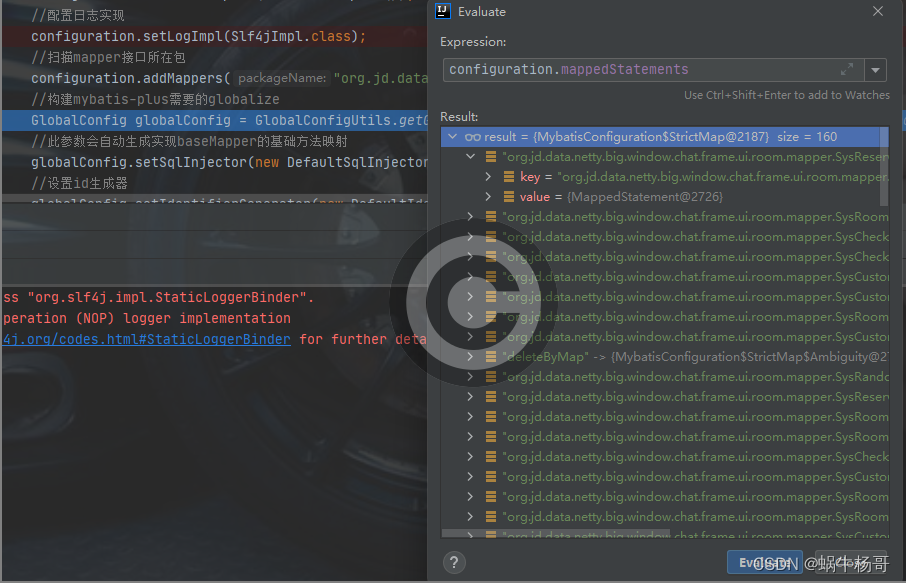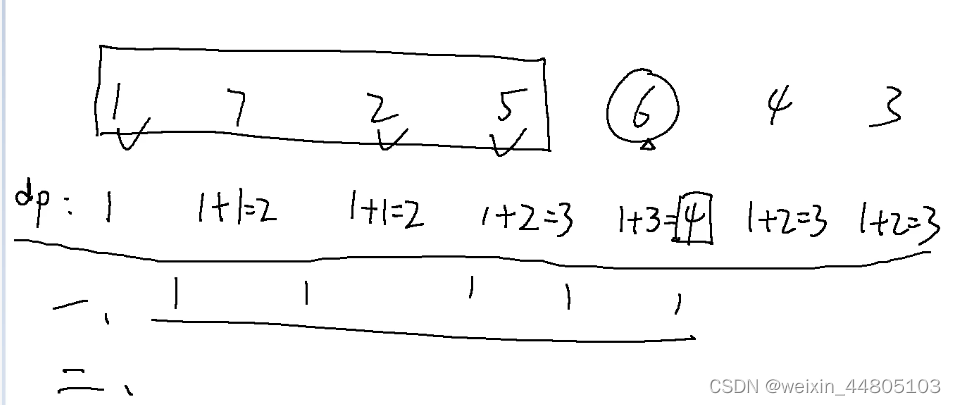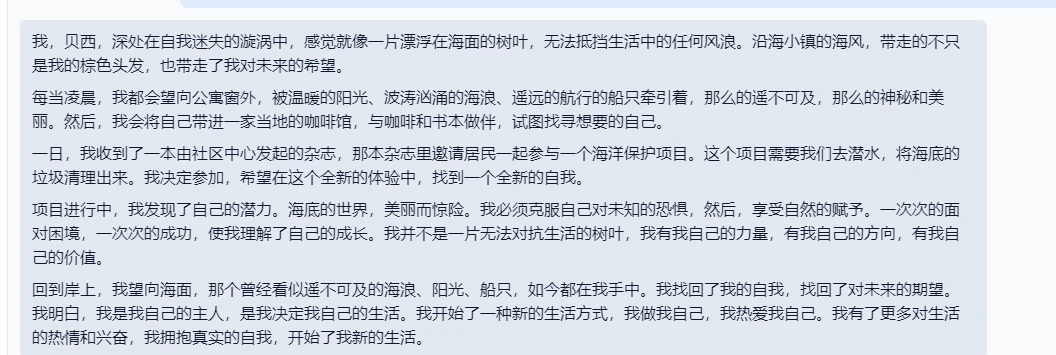入门基础(一)
创建数组
1- np.array()
参数众多,初学时只要关注基本用法。
array(...)
array(object, dtype=None, *, copy=True, order='K', subok=False, ndmin=0,
like=None)
Create an array.
Parameters
----------
object : array_like
An array, any object exposing the array interface, an object whose
__array__ method returns an array, or any (nested) sequence.
dtype : data-type, optional
The desired data-type for the array. If not given, then the type will
be determined as the minimum type required to hold the objects in the
sequence.
copy : bool, optional
If true (default), then the object is copied. Otherwise, a copy will
only be made if __array__ returns a copy, if obj is a nested sequence,
or if a copy is needed to satisfy any of the other requirements
(`dtype`, `order`, etc.).
order : {'K', 'A', 'C', 'F'}, optional
Specify the memory layout of the array. If object is not an array, the
newly created array will be in C order (row major) unless 'F' is
specified, in which case it will be in Fortran order (column major).
If object is an array the following holds.
===== ========= ===================================================
order no copy copy=True
===== ========= ===================================================
'K' unchanged F & C order preserved, otherwise most similar order
'A' unchanged F order if input is F and not C, otherwise C order
'C' C order C order
'F' F order F order
===== ========= ===================================================
When ``copy=False`` and a copy is made for other reasons, the result is
the same as if ``copy=True``, with some exceptions for 'A', see the
Notes section. The default order is 'K'.
subok : bool, optional
If True, then sub-classes will be passed-through, otherwise
the returned array will be forced to be a base-class array (default).
ndmin : int, optional
Specifies the minimum number of dimensions that the resulting
array should have. Ones will be pre-pended to the shape as
needed to meet this requirement.
like : array_like
Reference object to allow the creation of arrays which are not
NumPy arrays. If an array-like passed in as ``like`` supports
the ``__array_function__`` protocol, the result will be defined
by it. In this case, it ensures the creation of an array object
compatible with that passed in via this argument.
.. versionadded:: 1.20.0元组、列表转换
>>> import numpy as np
>>> np.array((1,2,3))
array([1, 2, 3])
>>> np.array([3,2,3])
array([3, 2, 3])
>>> np.array([[3,2,3],[4,5,6]])
array([[3, 2, 3],
[4, 5, 6]])内置函数 range()
>>> import numpy as np
>>> np.array(range(5))
array([0, 1, 2, 3, 4])
>>> np.array(range(2,11,2))
array([ 2, 4, 6, 8, 10])
>>> np.array([range(1,5),range(5,9)])
array([[1, 2, 3, 4],
[5, 6, 7, 8]])数组副本copy,开辟一块新内存复制原数组
>>> import numpy as np
>>> a = np.array([1,2,3])
>>> b = np.array(a)
>>> b
array([1, 2, 3])
>>> a[0] = 3
>>> a,b
(array([3, 2, 3]), array([1, 2, 3]))主要参数:
dtype= 数组元素的数据类型,可选
copy= 对象是否需要复制,可选
order= 创建数组的样式,C为行方向,F为列方向,A为任意方向(默认)
subok= 默认返回一个与基类类型一致的数组
ndmin= 指定生成数组的最小维度
>>> import numpy as np
>>> np.array([[1, 2, 3, 4]], dtype=float)
array([[1., 2., 3., 4.]])
>>> np.array([[1, 2], [3, 4]], dtype=complex)
array([[1.+0.j, 2.+0.j],
[3.+0.j, 4.+0.j]])
>>> np.array([[1, 2, 3, 4]], dtype=np.int64)
array([[1, 2, 3, 4]], dtype=int64)
>>> np.array({1, 2, 3, 4})
array({1, 2, 3, 4}, dtype=object)
>>> np.array({1, 2, 3, 4}).dtype
dtype('O') #集合只能作一个整体,大写字母O,即object
>>> np.array([[1, 2, 3, 4]], dtype=np.int64).dtype
dtype('int64')
>>> np.array([[1, 2], [3, 4, 5]])
array([list([1, 2]), list([3, 4, 5])], dtype=object)
>>> np.array([[1, 2], [3, 4, 5]]).dtype
dtype('O')
>>>
>>> np.array([1, 2, 3, 4, 5], ndmin = 1)
array([1, 2, 3, 4, 5])
>>> np.array([1, 2, 3, 4, 5], ndmin = 2)
array([[1, 2, 3, 4, 5]])
>>> np.array([1, 2, 3, 4, 5], ndmin = 3)
array([[[1, 2, 3, 4, 5]]])
>>>2.1- 基本属性 .shape .ndim .dtype .size等
>>> a = np.array(range(2,11,2))
>>> b = np.array([range(1,5),range(5,9)])
>>> a.shape
(5,)
>>> b.shape
(2, 4)
>>> a.ndim, b.ndim
(1, 2)
>>> np.array(1)
array(1)
>>> np.array(1).ndim
0 #常数为0维
>>> a.dtype.name, b.dtype.name
('int32', 'int32')
>>> a.size, b.size
(5, 8)
>>> type(a), type(b)
(<class 'numpy.ndarray'>, <class 'numpy.ndarray'>)
>>> a
array([ 2, 4, 6, 8, 10])
>>> b
array([[1, 2, 3, 4],
[5, 6, 7, 8]])
>>> print(a)
[ 2 4 6 8 10]
>>> print(b)
[[1 2 3 4]
[5 6 7 8]].ndim 秩,即轴的数量或维度的数量
.shape 数组的维度,对于矩阵,n 行 m 列
.size 数组元素的总个数,相当于 .shape 中 n*m 的值
.dtype 对象的元素类型
.itemsize 对象中每个元素的大小,以字节为单位
.flags 对象的内存信息
.real 元素的实部
.imag 元素的虚部
.data 包含实际数组元素的缓冲区,由于一般通过数组的索引获取元素,所以通常不需要使用这个属性。
2.2- 与属性同名的方法
除.itemsize .flags .data外者有同名方法,其它有方法的参数都为ndarray,dtype()除外。
>>> a = np.array([*range(5)],dtype=complex)
>>> np.ndim(a)
1
>>> np.shape(a)
(5,)
>>> np.size(a)
5
>>> np.real(a)
array([0., 1., 2., 3., 4.])
>>> np.imag(a)
array([0., 0., 0., 0., 0.])
>>> np.dtype(int)
dtype('int32')
>>> np.dtype(complex)
dtype('complex128')
>>> np.dtype(float)
dtype('float64')
>>> a.itemsize
16
>>> a.flags
C_CONTIGUOUS : True
F_CONTIGUOUS : True
OWNDATA : True
WRITEABLE : True
ALIGNED : True
WRITEBACKIFCOPY : False
UPDATEIFCOPY : False
>>> a.data
<memory at 0x0000000002D79DC0>3- np.arange()
arange(...)
arange([start,] stop[, step,], dtype=None, *, like=None)
Return evenly spaced values within a given interval.
Values are generated within the half-open interval ``[start, stop)``
(in other words, the interval including `start` but excluding `stop`).
For integer arguments the function is equivalent to the Python built-in
`range` function, but returns an ndarray rather than a list.
When using a non-integer step, such as 0.1, the results will often not
be consistent. It is better to use `numpy.linspace` for these cases.
Parameters
----------
start : integer or real, optional
Start of interval. The interval includes this value. The default
start value is 0.
stop : integer or real
End of interval. The interval does not include this value, except
in some cases where `step` is not an integer and floating point
round-off affects the length of `out`.
step : integer or real, optional
Spacing between values. For any output `out`, this is the distance
between two adjacent values, ``out[i+1] - out[i]``. The default
step size is 1. If `step` is specified as a position argument,
`start` must also be given.
dtype : dtype
The type of the output array. If `dtype` is not given, infer the data
type from the other input arguments.
like : array_like
Reference object to allow the creation of arrays which are not
NumPy arrays. If an array-like passed in as ``like`` supports
the ``__array_function__`` protocol, the result will be defined
by it. In this case, it ensures the creation of an array object
compatible with that passed in via this argument.
.. versionadded:: 1.20.0np.arange() 与 np.array(range()) 类似,但前者允许用浮点数
>>> np.arange(12)
array([ 0, 1, 2, 3, 4, 5, 6, 7, 8, 9, 10, 11])
>>> np.arange(0,1.1,0.1)
array([0. , 0.1, 0.2, 0.3, 0.4, 0.5, 0.6, 0.7, 0.8, 0.9, 1. ])
>>> np.arange(2,5,0.3)
array([2. , 2.3, 2.6, 2.9, 3.2, 3.5, 3.8, 4.1, 4.4, 4.7])4- np.reshape()
reshape(a, newshape, order='C')
Gives a new shape to an array without changing its data.
Parameters
----------
a : array_like
Array to be reshaped.
newshape : int or tuple of ints
The new shape should be compatible with the original shape. If
an integer, then the result will be a 1-D array of that length.
One shape dimension can be -1. In this case, the value is
inferred from the length of the array and remaining dimensions.
order : {'C', 'F', 'A'}, optional
Read the elements of `a` using this index order, and place the
elements into the reshaped array using this index order. 'C'
means to read / write the elements using C-like index order,
with the last axis index changing fastest, back to the first
axis index changing slowest. 'F' means to read / write the
elements using Fortran-like index order, with the first index
changing fastest, and the last index changing slowest. Note that
the 'C' and 'F' options take no account of the memory layout of
the underlying array, and only refer to the order of indexing.
'A' means to read / write the elements in Fortran-like index
order if `a` is Fortran *contiguous* in memory, C-like order
otherwise.
Returns
-------
reshaped_array : ndarray
This will be a new view object if possible; otherwise, it will
be a copy. Note there is no guarantee of the *memory layout* (C- or
Fortran- contiguous) of the returned array.>>> a = np.arange(8)
>>> a
array([0, 1, 2, 3, 4, 5, 6, 7])
>>> np.reshape(a,(2,4))
array([[0, 1, 2, 3],
[4, 5, 6, 7]])
>>> np.reshape(a,(4,2))
array([[0, 1],
[2, 3],
[4, 5],
[6, 7]])
>>> np.reshape(a,(8,1))
array([[0],
[1],
[2],
[3],
[4],
[5],
[6],
[7]])
>>> a
array([0, 1, 2, 3, 4, 5, 6, 7])
>>> a.reshape(2,4)
array([[0, 1, 2, 3],
[4, 5, 6, 7]])
>>> a
array([0, 1, 2, 3, 4, 5, 6, 7])
>>> a.reshape(4,2)
array([[0, 1],
[2, 3],
[4, 5],
[6, 7]])
>>> a
array([0, 1, 2, 3, 4, 5, 6, 7])5- 数据类型
dtype对应的类型除了内置的int,float,complex等,可以用 np.bool_, np.int8, np.uint64:
bool_ 布尔型数据类型(True 或者 False)
int_ 默认的整数类型(类似于 C 语言中的 long,int32 或 int64)
intc 与 C 的 int 类型一样,一般是 int32 或 int 64
intp 用于索引的整数类型(类似于 C 的 ssize_t,一般情况下仍然是 int32 或 int64)
int8 字节(-128 to 127)
int16 整数(-32768 to 32767)
int32 整数(-2147483648 to 2147483647)
int64 整数(-9223372036854775808 to 9223372036854775807)
uint8 无符号整数(0 to 255)
uint16 无符号整数(0 to 65535)
uint32 无符号整数(0 to 4294967295)
uint64 无符号整数(0 to 18446744073709551615)
float_ float64 类型的简写
float16 半精度浮点数,包括:1 个符号位,5 个指数位,10 个尾数位
float32 单精度浮点数,包括:1 个符号位,8 个指数位,23 个尾数位
float64 双精度浮点数,包括:1 个符号位,11 个指数位,52 个尾数位
complex_ complex128 类型的简写,即 128 位复数
complex64 复数,表示双 32 位浮点数(实数部分和虚数部分)
complex128 复数,表示双 64 位浮点数(实数部分和虚数部分)
每个内建类型都有一个唯一定义它的字符代码:
b 布尔型
i (有符号) 整型
u 无符号整型 integer
f 浮点型
c 复数浮点型
m timedelta(时间间隔)
M datetime(日期时间)
O (Python) 对象
S, a (byte-)字符串
U Unicode
V 原始数据 (void)
int8, int16, int32, int64 -- i1, i2, i4, i8
uint8,uint16,uint32,uint64 -- u1, u2, u4, u8
float16,float32,float64,float128 -- f2, f4, f8, f16
或: float32,float64,float128 -- f, d, g
complex64,complex128,complex256 -- c8,c16,c32
bool -- ?
>>> import numpy as np
>>> np.dtype([('name','S20'), ('age', 'i1'), ('marks', 'f4')])
dtype([('name', 'S20'), ('age', 'i1'), ('marks', '<f4')])
>>> import numpy as np
>>> student = np.dtype([('name','S20'), ('age', 'i1'), ('marks', 'f4')])
>>> student
dtype([('name', 'S20'), ('age', 'i1'), ('marks', '<f4')])
>>> np.array([('abc', 21, 50),('xyz', 18, 75)], dtype = student)
array([(b'abc', 21, 50.), (b'xyz', 18, 75.)],
dtype=[('name', 'S20'), ('age', 'i1'), ('marks', '<f4')])
>>> a = np.array([('abc', 21, 50),('xyz', 18, 75)], dtype = student)
>>> print(a)
[(b'abc', 21, 50.) (b'xyz', 18, 75.)]6- np.asarray()
asarray(...)
asarray(a, dtype=None, order=None, *, like=None)
Convert the input to an array.
Parameters
----------
a : array_like
Input data, in any form that can be converted to an array. This
includes lists, lists of tuples, tuples, tuples of tuples, tuples
of lists and ndarrays.
dtype : data-type, optional
By default, the data-type is inferred from the input data.
order : {'C', 'F', 'A', 'K'}, optional
Memory layout. 'A' and 'K' depend on the order of input array a.
'C' row-major (C-style),
'F' column-major (Fortran-style) memory representation.
'A' (any) means 'F' if `a` is Fortran contiguous, 'C' otherwise
'K' (keep) preserve input order
Defaults to 'C'.
like : array_like
Reference object to allow the creation of arrays which are not
NumPy arrays. If an array-like passed in as ``like`` supports
the ``__array_function__`` protocol, the result will be defined
by it. In this case, it ensures the creation of an array object
compatible with that passed in via this argument.
.. versionadded:: 1.20.0>>> import numpy as np
>>> a = np.array([1,2,3])
>>> b = np.asarray(a)
>>> a,b
(array([1, 2, 3]), array([1, 2, 3]))
>>> a[0]=3
>>> a,b
(array([3, 2, 3]), array([3, 2, 3]))注意 b=asarray(a) 与 b=array(a) 的区别,前者两数组指向同一内存地址。
7- np.fromiter()
fromiter(...)
fromiter(iter, dtype, count=-1, *, like=None)
Create a new 1-dimensional array from an iterable object.
Parameters
----------
iter : iterable object
An iterable object providing data for the array.
dtype : data-type
The data-type of the returned array.
count : int, optional
The number of items to read from *iterable*. The default is -1,
which means all data is read.
like : array_like
Reference object to allow the creation of arrays which are not
NumPy arrays. If an array-like passed in as ``like`` supports
the ``__array_function__`` protocol, the result will be defined
by it. In this case, it ensures the creation of an array object
compatible with that passed in via this argument.
.. versionadded:: 1.20.0
Returns
-------
out : ndarray
The output array.
Notes
-----
Specify `count` to improve performance. It allows ``fromiter`` to
pre-allocate the output array, instead of resizing it on demand.>>> import numpy as np
>>> np.fromiter(range(5),dtype=int)
array([0, 1, 2, 3, 4])
>>> np.fromiter(range(5),dtype=float)
array([0., 1., 2., 3., 4.])
>>> iterable = (x*x for x in range(5))
>>> np.fromiter(iterable, float)
array([ 0., 1., 4., 9., 16.])
>>> np.fromiter({1,2,3,4}, float)
array([1., 2., 3., 4.])
>>> np.array({1,2,3,4})
array({1, 2, 3, 4}, dtype=object)
#注意:array()不能从集合中取出元素,只能作为一个整体
>>> np.fromiter('Hann Yang',dtype='S1')
array([b'H', b'a', b'n', b'n', b' ', b'Y', b'a', b'n', b'g'], dtype='|S1')
>>> np.fromiter(b'Hann Yang',dtype=np.uint8)
array([ 72, 97, 110, 110, 32, 89, 97, 110, 103], dtype=uint8)
#注意:字节串b''与字符串str的区别8- np.frombuffer()
流的形式读入转化成 ndarray 对象,还可以分批读入。
frombuffer(...)
frombuffer(buffer, dtype=float, count=-1, offset=0, *, like=None)
Interpret a buffer as a 1-dimensional array.
Parameters
----------
buffer : buffer_like
An object that exposes the buffer interface.
dtype : data-type, optional
Data-type of the returned array; default: float.
count : int, optional
Number of items to read. ``-1`` means all data in the buffer.
offset : int, optional
Start reading the buffer from this offset (in bytes); default: 0.
like : array_like
Reference object to allow the creation of arrays which are not
NumPy arrays. If an array-like passed in as ``like`` supports
the ``__array_function__`` protocol, the result will be defined
by it. In this case, it ensures the creation of an array object
compatible with that passed in via this argument.
.. versionadded:: 1.20.0>>> np.frombuffer('Hann Yang',dtype='S1')
Traceback (most recent call last):
File "<pyshell#68>", line 1, in <module>
np.frombuffer('Hann Yang',dtype='S1')
TypeError: a bytes-like object is required, not 'str'
>>> np.frombuffer(b'Hann Yang',dtype='S1')
array([b'H', b'a', b'n', b'n', b' ', b'Y', b'a', b'n', b'g'], dtype='|S1')
>>> np.frombuffer(b'Hann Yang',dtype=int)
Traceback (most recent call last):
File "<pyshell#70>", line 1, in <module>
np.frombuffer(b'Hann Yang',dtype=int)
ValueError: buffer size must be a multiple of element size
>>> np.frombuffer(b'Hann Yang',dtype=np.uint8)
array([ 72, 97, 110, 110, 32, 89, 97, 110, 103], dtype=uint8)
>>> np.frombuffer(b'Hann Yang',dtype='S1')
array([b'H', b'a', b'n', b'n', b' ', b'Y', b'a', b'n', b'g'], dtype='|S1')
>>> np.frombuffer(b'Hann Yang',dtype=np.uint8)
array([ 72, 97, 110, 110, 32, 89, 97, 110, 103], dtype=uint8)
>>> np.frombuffer(b'Hann Yang',dtype=np.uint8,count=4)
array([ 72, 97, 110, 110], dtype=uint8)
>>> np.frombuffer(b'Hann Yang',dtype=np.uint8,count=4,offset=4)
array([ 32, 89, 97, 110], dtype=uint8)
>>> np.frombuffer(b'Hann Yang',dtype=np.uint8,count=-1,offset=8)
array([103], dtype=uint8)9.1- np.linspace()
以等差数列创建数组
linspace(start, stop, num=50, endpoint=True, retstep=False, dtype=None, axis=0)
Return evenly spaced numbers over a specified interval.
Returns `num` evenly spaced samples, calculated over the
interval [`start`, `stop`].
The endpoint of the interval can optionally be excluded.
.. versionchanged:: 1.16.0
Non-scalar `start` and `stop` are now supported.
.. versionchanged:: 1.20.0
Values are rounded towards ``-inf`` instead of ``0`` when an
integer ``dtype`` is specified. The old behavior can
still be obtained with ``np.linspace(start, stop, num).astype(int)``
Parameters
----------
start : array_like
The starting value of the sequence.
stop : array_like
The end value of the sequence, unless `endpoint` is set to False.
In that case, the sequence consists of all but the last of ``num + 1``
evenly spaced samples, so that `stop` is excluded. Note that the step
size changes when `endpoint` is False.
num : int, optional
Number of samples to generate. Default is 50. Must be non-negative.
endpoint : bool, optional
If True, `stop` is the last sample. Otherwise, it is not included.
Default is True.
retstep : bool, optional
If True, return (`samples`, `step`), where `step` is the spacing
between samples.
dtype : dtype, optional
The type of the output array. If `dtype` is not given, the data type
is inferred from `start` and `stop`. The inferred dtype will never be
an integer; `float` is chosen even if the arguments would produce an
array of integers.
.. versionadded:: 1.9.0
axis : int, optional
The axis in the result to store the samples. Relevant only if start
or stop are array-like. By default (0), the samples will be along a
new axis inserted at the beginning. Use -1 to get an axis at the end.
.. versionadded:: 1.16.0创建区间可以是全开区间,也可以前开后闭区间。
>>> np.linspace(2.0, 3.0, num=5)
array([2. , 2.25, 2.5 , 2.75, 3. ])
>>> np.linspace(2.0, 3.0, num=5, endpoint=False)
array([2. , 2.2, 2.4, 2.6, 2.8])
>>> np.linspace(2.0, 3.0, num=5, retstep=True)
(array([2. , 2.25, 2.5 , 2.75, 3. ]), 0.25)
>>> np.linspace(1, 1, 10, dtype=int)
array([1, 1, 1, 1, 1, 1, 1, 1, 1, 1])9.2- np.logspace()
以对数数列创建数组
logspace(start, stop, num=50, endpoint=True, base=10.0, dtype=None, axis=0)
Return numbers spaced evenly on a log scale.
In linear space, the sequence starts at ``base ** start``
(`base` to the power of `start`) and ends with ``base ** stop``
(see `endpoint` below).
.. versionchanged:: 1.16.0
Non-scalar `start` and `stop` are now supported.
Parameters
----------
start : array_like
``base ** start`` is the starting value of the sequence.
stop : array_like
``base ** stop`` is the final value of the sequence, unless `endpoint`
is False. In that case, ``num + 1`` values are spaced over the
interval in log-space, of which all but the last (a sequence of
length `num`) are returned.
num : integer, optional
Number of samples to generate. Default is 50.
endpoint : boolean, optional
If true, `stop` is the last sample. Otherwise, it is not included.
Default is True.
base : array_like, optional
The base of the log space. The step size between the elements in
``ln(samples) / ln(base)`` (or ``log_base(samples)``) is uniform.
Default is 10.0.
dtype : dtype
The type of the output array. If `dtype` is not given, the data type
is inferred from `start` and `stop`. The inferred type will never be
an integer; `float` is chosen even if the arguments would produce an
array of integers.
axis : int, optional
The axis in the result to store the samples. Relevant only if start
or stop are array-like. By default (0), the samples will be along a
new axis inserted at the beginning. Use -1 to get an axis at the end.
.. versionadded:: 1.16.0>>> np.logspace(2.0, 3.0, num=4)
array([ 100. , 215.443469 , 464.15888336, 1000. ])
>>> np.logspace(2.0, 3.0, num=4, endpoint=False)
array([100. , 177.827941 , 316.22776602, 562.34132519])
>>> np.logspace(2.0, 3.0, num=4, base=2.0)
array([4. , 5.0396842 , 6.34960421, 8. ])9.3- np.geomspace()
geomspace(start, stop, num=50, endpoint=True, dtype=None, axis=0)
Return numbers spaced evenly on a log scale (a geometric progression).
This is similar to `logspace`, but with endpoints specified directly.
Each output sample is a constant multiple of the previous.
.. versionchanged:: 1.16.0
Non-scalar `start` and `stop` are now supported.
Parameters
----------
start : array_like
The starting value of the sequence.
stop : array_like
The final value of the sequence, unless `endpoint` is False.
In that case, ``num + 1`` values are spaced over the
interval in log-space, of which all but the last (a sequence of
length `num`) are returned.
num : integer, optional
Number of samples to generate. Default is 50.
endpoint : boolean, optional
If true, `stop` is the last sample. Otherwise, it is not included.
Default is True.
dtype : dtype
The type of the output array. If `dtype` is not given, the data type
is inferred from `start` and `stop`. The inferred dtype will never be
an integer; `float` is chosen even if the arguments would produce an
array of integers.
axis : int, optional
The axis in the result to store the samples. Relevant only if start
or stop are array-like. By default (0), the samples will be along a
new axis inserted at the beginning. Use -1 to get an axis at the end.
.. versionadded:: 1.16.0>>> np.geomspace(1, 1000, num=4)
array([ 1., 10., 100., 1000.])
>>> np.geomspace(1, 1000, num=3, endpoint=False)
array([ 1., 10., 100.])
>>> np.geomspace(1, 1000, num=4, endpoint=False)
array([ 1. , 5.62341325, 31.6227766 , 177.827941 ])
>>> np.geomspace(1, 256, num=9)
array([ 1., 2., 4., 8., 16., 32., 64., 128., 256.])
#Note that the above may not produce exact integers:
>>> np.geomspace(1, 256, num=9, dtype=int)
array([ 1, 2, 4, 7, 16, 32, 63, 127, 256])
>>> np.around(np.geomspace(1, 256, num=9)).astype(int)
array([ 1, 2, 4, 8, 16, 32, 64, 128, 256])
#Negative, decreasing, and complex inputs are allowed:
>>> np.geomspace(1000, 1, num=4)
array([1000., 100., 10., 1.])
>>> np.geomspace(-1000, -1, num=4)
array([-1000., -100., -10., -1.])
>>> np.geomspace(1j, 1000j, num=4) # Straight line
array([0. +1.j, 0. +10.j, 0. +100.j, 0.+1000.j])
>>> np.geomspace(-1+0j, 1+0j, num=5) # Circle
array([-1.00000000e+00+1.22464680e-16j, -7.07106781e-01+7.07106781e-01j,
6.12323400e-17+1.00000000e+00j, 7.07106781e-01+7.07106781e-01j,
1.00000000e+00+0.00000000e+00j])10.1- 常量np.pi np.e np.nan np.inf 等
>>> np.pi
3.141592653589793
>>> np.e
2.718281828459045
>>> np.nan
nan
>>> np.inf
inf
>>> np.Inf
inf
>>> np.Infinity
inf
>>> np.PINF
inf
>>> np.NINF
-inf
>>> np.PZERO
0.0
>>> np.NZERO
-0.010.2- 常量数组 zeros() ones() empty()
>>> np.zeros((2,5))
array([[0., 0., 0., 0., 0.],
[0., 0., 0., 0., 0.]])
>>> np.zeros((2,5),dtype=int)
array([[0, 0, 0, 0, 0],
[0, 0, 0, 0, 0]])
>>> np.linspace(0, 0, 10, dtype=int).reshape((2,5))
array([[0, 0, 0, 0, 0],
[0, 0, 0, 0, 0]])
>>>
>>> np.ones((3,4))
array([[1., 1., 1., 1.],
[1., 1., 1., 1.],
[1., 1., 1., 1.]])
>>> np.ones((3,4),dtype=int)
array([[1, 1, 1, 1],
[1, 1, 1, 1],
[1, 1, 1, 1]])
>>> np.linspace(1, 1, 12, dtype=int).reshape((3,4))
array([[1, 1, 1, 1],
[1, 1, 1, 1],
[1, 1, 1, 1]])
>>>
>>> np.linspace(1, 1, 12, dtype=int).reshape((3,4))*3
array([[3, 3, 3, 3],
[3, 3, 3, 3],
[3, 3, 3, 3]])
>>> np.linspace(1, 1, 12, dtype=int).reshape((3,4))*np.pi
array([[3.14159265, 3.14159265, 3.14159265, 3.14159265],
[3.14159265, 3.14159265, 3.14159265, 3.14159265],
[3.14159265, 3.14159265, 3.14159265, 3.14159265]])10.3- 常量数组 zeros_like() ones_like() empty_like()
>>> arr = np.ones((3,4))
>>> np.zeros_like(arr)
array([[0., 0., 0., 0.],
[0., 0., 0., 0.],
[0., 0., 0., 0.]])10.4- 单位矩阵 np.eye() 或 np.identity() 对角线为1,其余为0
>>> np.eye(4)
array([[1., 0., 0., 0.],
[0., 1., 0., 0.],
[0., 0., 1., 0.],
[0., 0., 0., 1.]])
>>> np.identity(4, dtype=int)
array([[1, 0, 0, 0],
[0, 1, 0, 0],
[0, 0, 1, 0],
[0, 0, 0, 1]])


![golangd\pycharm-ai免费代码助手安装使用gpt4-免费使用--[推荐]](https://img-blog.csdnimg.cn/5c495b2d60d441d0a337152c54086d14.png)
















